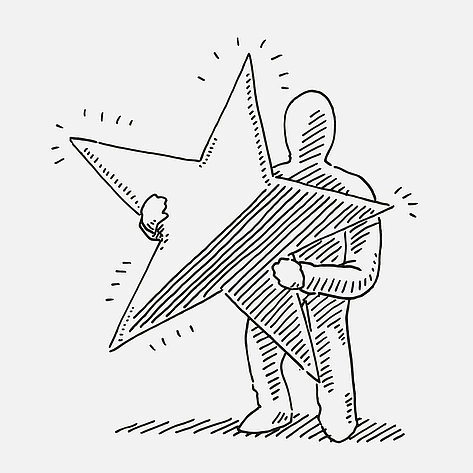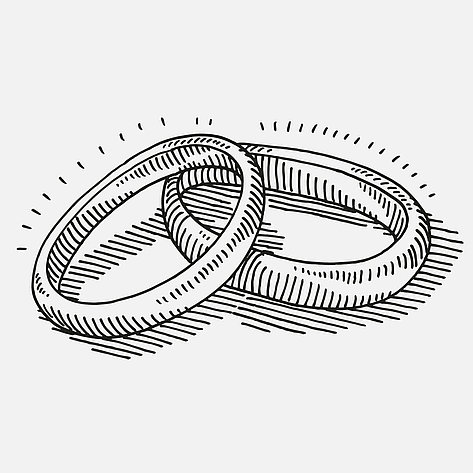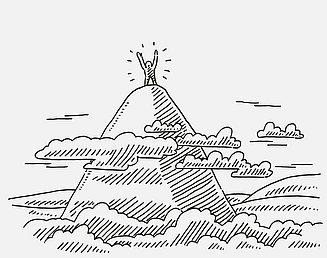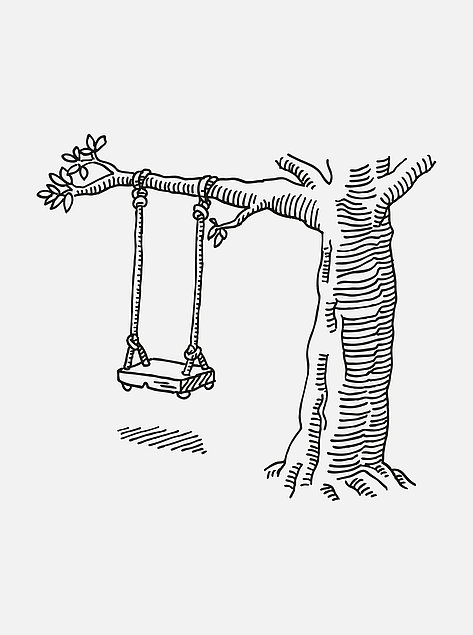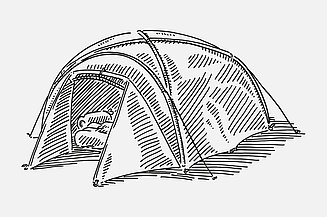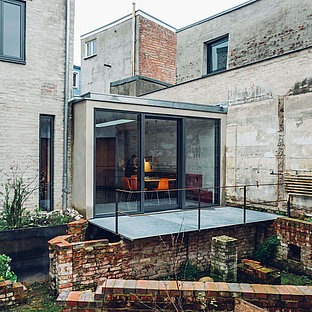Status and its symbols through the ages
10 min readWhile textiles for clothing were still so valuable in the 18th century that stylish gentlemen wore balloon-shaped trousers to flaunt their wealth in the form of countless rolls of fabric around their legs, textiles have become disposable items now. Where formerly Porsche and Rolex were the main status symbols, organic products and high rents are now considered as signs of having ‘made it’. And the more dramatic the living space, the more prestige is gained through a fancy apartment or even home ownership. We asked several architects what exactly is important to their private clients today, and what they regard as precious in connection with their homes.
Material or immaterial?
On the whole we know that, by European standards, Germans value their homes and their free time the most. As only slightly less than 50% of Germans are home-owners, this probably refers to all residential properties – bought or rented – that people have made their homes. In particular, the amount of time people can spend at home is becoming more valuable. In the USA, the term ‘quality time’ has been used since the 1970s as a synonym for time spent with one’s family. This is all about the compatibility of family life and working life, as well as the strengthening of human relations. When asked in an interview with ZEIT-ONLINE what he considered to be ‘a good life’, the historian Frank Trentmann also answered: “Spending time with the family. A good life also includes a dog and a lake to swim in. And music is important to me as well (…).”
Basically, things that money cannot buy. It is an old adage that immaterial goods generate more lasting contentment – in this respect, the anticipation and pleasant memories are more effective than an expensive piece of jewellery. Unless that piece is a bracelet or string of pearls inherited from your grandmother, charged with nostalgic and emotional values and thus a true personal treasure – a precious memory. A hand-crafted desk with turned legs from your great-grandfather’s time or a historic farmhouse wardrobe – once a great investment in a farmer’s household and seen as a valuable status symbol – may now be precious heirlooms to some people due to their personal history, despite the fact that comparable mass-produced ‘made in China’ goods can nowadays be bought from a furniture shop at a low price, complete with artificial patina and a ‘used look’.
Not all is gold that glitters.
Let us think back even further. There was a time when coffee and tea were expensive status symbols, exotic signs of their connoisseurs’ wealth. Anyone who has ever tried to go without salt – formerly known as ‘white gold’ – will have since come to really appreciate it, yet today it is readily available. Generally speaking, many things are available to us in abundance today. The transition of items going from real treasures to status symbols and then to mass-produced commodities that are available to everyone has long since come about in many areas; this is a valuable process in the sense of putting precious goods within reach of as many people as possible. But what do we still value today, apart from housing and time? Elisabeth von Thadden, editor of Die ZEIT, holds seminars about the ‘good life’ during which the question of what people need and what is valuable to them is dealt with. Here, one thing never changes – the question is always divided into two basic thoughts, i.e. whether it concerns measurable goods or ‘non-measurable goods’ such as friendship and love.
To Aristotle, the answer was already clear: a good life means being self-sufficient and active among friends. It certainly helps when colleagues treat each other as friends. Epicurus, another great philosopher, approached this topic from a different angle: for people who are never satisfied with just having enough, nothing will ever be good enough in any case. Is that true? Let us delve in deeper. In the days of Epicurus, certain precious metals were regarded as extremely valuable. People who could afford golden accessories possessed treasures that simultaneously showed off their status. This remained the case for many centuries. A valuable wedding ring, the symbol of a unique bond between two people, is traditionally made of gold. But today, no one would notice any more if that ring was not actually made of real gold. What effect does that have on the value of the ring? Even though it may be made of copper, it is probably a treasure of immeasurable worth to its wearer.
This is no longer underground, but in most cases mainly expensive. Another thing that is extremely popular with this generation is ‘ugly sneakers’ – extremely chunky, garish trainers, some exorbitantly expensive. Travel as a status symbol has also changed. For 97% of all people aged between 18 and 30, travelling has become part of normal life. Crazy trips have long since replaced the new car as the main status symbol for them.
However, the car is still a status symbol for their grandparents. Young people outdo each other with several trips per year: the more exotic, the better – and this is easy for Germans, since according to the Global Passport Index, the German passport is one of the world’s most powerful travel documents. But is a single trip still valuable in view of such an inflation in travel behaviour? And when a twenty-year-old sports sparkly golden bling on their ears, does it come from a pair of precious real gold earrings their mother received as an engagement present, or is it just sparkling costume jewellery worth €9.90? Is the Louis Vuitton bag genuine, or is it a knock-off? We ourselves decide what is precious to us – regardless of its monetary value.
You are what you eat
And what about the parents’ generation? “My house, my car, my boat” – this saying has more or less become a thing of the past. In large cities, where housing is becoming scarce, there are no longer many garden owners, so gardens are also becoming treasures. The allotment is in again. It has lost its square image and has become proof of spare time spent sensibly by its occupants, which turned it into a status symbol. In addition, being able to spend one’s valuable spare time in a precious little garden is doubly valuable. ‘Staycation’ – the holiday spent at home – falls into the same category. It gives the impression that one lives consciously and can afford to stay at home.
The issue of nutrition also fits in here, since home-grown organic tomatoes demonstrate not only a certain lifestyle, and consequently status, but also the general trend we follow, be it low-carb, paleo or clean eating! Those who are fathers also show this off in certain circles. The precious child soon becomes a status symbol as well and the one who finishes work at lunchtime to spend time with the family substantiates his prestige-enhancing lifestyle. So, we see that a change of thinking has taken place – and a stark differentiation. Different generations, as well as social groups, each have their own status symbols. This is enhanced by what is known as ‘hybrid consumption behaviour’. Luxury, i.e. whatever is not needed but still desired, is individually defined, taking into account its positive effects on the consumer.
The universal status symbol is no more
Only a few decades ago, it was still perfectly clear how people could demonstrate their status to others: prestigious furniture, expensive cars, valuable jewellery, and during the time of the ‘economic miracle’ in the 1950s and early ‘60s, even corpulence. This is all is no longer universally accepted; some of it is even embarrassing. High quality is still in, but the status symbols nowadays do not require recognition from everyone – it is enough when insiders recognise them. “There is neither a universal status symbol, nor a universal social status. The smartwatch carries prestige among fans of innovative technological gadgets but makes no impression on neo-environmentalists. The exorbitantly expensive coffee maker is not recognised by anyone except other fans of the brand. And only those who appreciate fair trade will recognise and appreciate fair fashion brands worn by others. The new status symbols are more differentiated, more subtle and less widely accepted than ever. They are distinguishable from status objects of the past primarily by a single attribute: they are no longer universal”. This is how Lena Papasabbas puts it on the website of the Future Institute, which is dedicated to trends and future research in Germany.
It also carries out research on housing. For example, the ‘Home Report 2019’ by Oona Horx-Strathern on the Institute’s website reads: “The ‘Anywheres’ (20 to 25% of the population) are unattached, urban, liberal, hold a university degree, are not very nostalgic, but rather achievement-orientated and egalitarian in their attitudes towards social background, gender and sexual orientation; they have only loose relationships when it comes to identifying themselves with larger groups, such as their nationality; they appreciate autonomy and self-realisation more than stability, community and tradition.” It is easy to imagine that for this group, the value of travelling and free time outweighs the value of material goods. They are not dependent on expensive living space, either. This group is growing, so does this mean that the end of “My home is my castle and my status symbol” is coming? The future remains exciting – what will our homes be like, and what will our future housing situation mean for our status? What will we see as a real treasure? Let us return once more to Aristotle. The approach of the ‘Anywheres’ might have appealed to him, since he believed that “Life is movement”.
